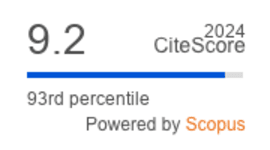Microbes from Peat Swamp Forest — The Hidden Reservoir for Secondary Metabolites?
DOI:
https://doi.org/10.36877/pmmb.a0000077Abstract
Antimicrobial resistance is a significant threat to the healthcare sector. For the past century, there has been a decline in the discovery of new antibiotics. This has urged researchers to bio-prospect for new bioactive agents from microbes originating from untapped environments, as well as to explore the potential of other microbial genera apart from the wellknown Streptomyces. Tropical peat swamp forests are an example of such an environment. Two novel antimicrobial-producing bacteria from the genera Burkholderia and Paenibacillus have been identified to produce potent antimicrobials. These two genera of bacteria have recently gained tremendous interest due to their genome complexity. They are known as multifaceted organisms not only because of their genetic content, but also due to their positive interactions with the environment along with a plethora of organisms including plants and animals. The interactions observed are attributed to their genomes and to their production of secondary metabolites including antimicrobials. Hence, this review provides an overview of the nature of tropical peat swamp forests, taxonomy and production of secondary metabolites of both Burkholderia and Paenibacillus, as well as discussing the future perspective of isolating antimicrobial-producing microbes from tropical peat swamp forests.Downloads
Published
How to Cite
Issue
Section
License
Copyright (c) 2020 Kuan-Shion Ong, Vengadesh Letchumanan, Jodi Woan-Fei Law, Catherine M. Yule, Sui-Mae Lee

This work is licensed under a Creative Commons Attribution-NonCommercial 4.0 International License.
Author(s) shall retain the copyright of their work and grant the Journal/Publisher right for the first publication with the work simultaneously licensed under:
Creative Commons Attribution-NonCommercial 4.0 International (CC BY-NC 4.0). This license allows for the copying, distribution and transmission of the work, provided the correct attribution of the original creator is stated. Adaptation and remixing are also permitted.

This broad license intends to facilitate free access to, as well as the unrestricted reuse of, original works of all types for non-commercial purposes.
The author(s) permits HH Publisher to publish this article that has not been submitted elsewhere.



.png)

.jpg)
